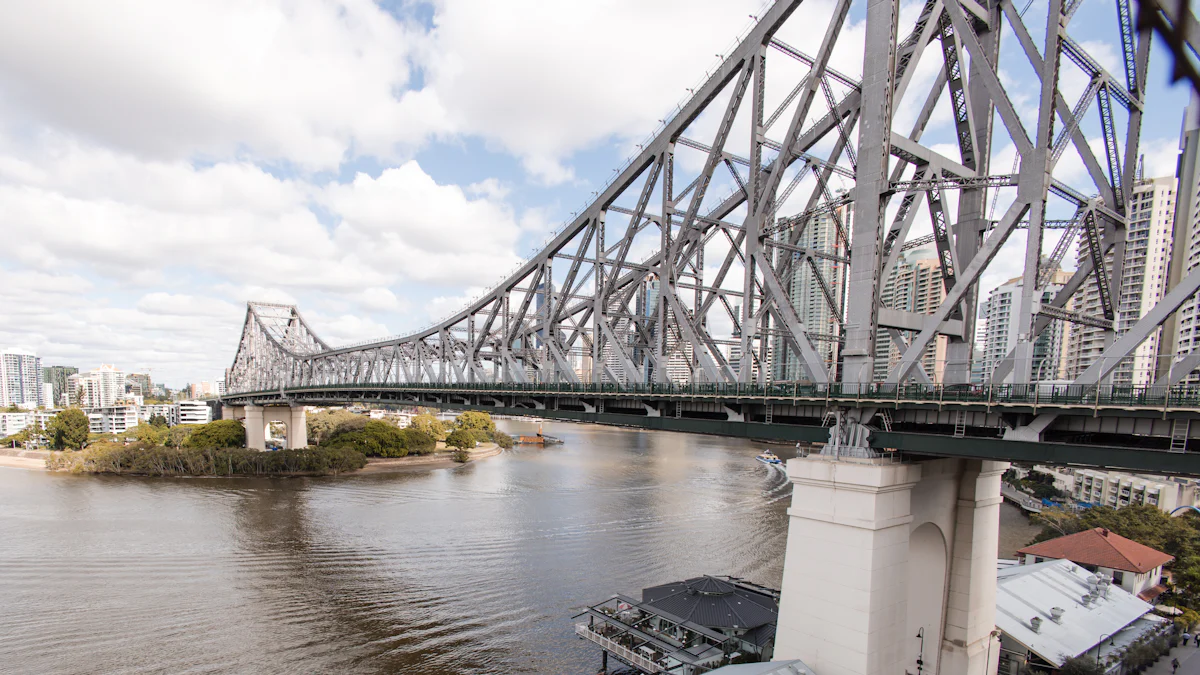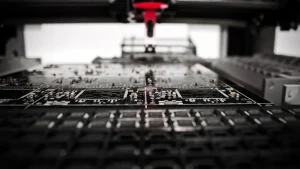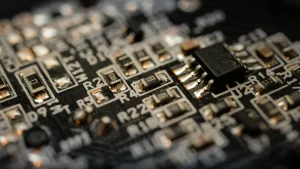
A cantilever paddle is a specialized tool designed to support and transfer materials with precision. Its unique structure, featuring a single fixed end and a free-moving end, allows it to handle tasks requiring stability and flexibility. These paddles play a vital role in industries like semiconductor manufacturing, where they transfer wafer boats into diffusion furnaces for coating. Their use extends to scientific research, where precision instruments rely on their stability. Materials like high-purity silicon carbide enhance their durability and performance, making them indispensable in high-temperature and demanding environments.
要点
- Cantilever paddles feature a unique design with one fixed end and a free-moving end, providing stability and flexibility for precise material handling.
- Selecting the right material, such as high-purity silicon carbide for high temperatures or quartz for chemical resistance, is crucial for optimal paddle performance.
- These paddles are versatile tools used in various industries, including semiconductor manufacturing and scientific research, enhancing efficiency and accuracy.
- Cantilever paddles excel in delivering high precision and control, making them essential for delicate operations where minor errors can have significant consequences.
- While they offer numerous advantages, potential cost considerations and limitations in extreme environments should be evaluated when choosing cantilever paddles.
- Their adaptability allows cantilever paddles to integrate seamlessly into existing systems, making them indispensable in both industrial and experimental setups.
- Emerging applications in sensing technologies highlight the ongoing evolution of cantilever paddles, showcasing their potential in advanced monitoring systems.
Key Features of Cantilever Paddles

Design Elements
Cantilever structure and its significance
The cantilever structure forms the backbone of a cantilever paddle. This design features one fixed end and one free-moving end, allowing precise control during material handling. You can rely on this structure for tasks requiring stability and flexibility. For example, in semiconductor manufacturing, the cantilever design ensures accurate wafer placement in high-temperature environments. Its ability to maintain structural integrity under stress makes it indispensable in industrial and scientific applications.
Shape and size variations for different applications
Cantilever paddles come in various shapes and sizes to suit specific tasks. Smaller paddles excel in precision-based applications like atomic force microscopy, while larger ones handle industrial processes such as wafer transfer. You can select a paddle tailored to your needs, ensuring optimal performance. The versatility in design allows these paddles to adapt to diverse industries, from research labs to manufacturing plants.
Materials Used
Common materials (e.g., silicon carbide, quartz, composites)
The choice of material significantly impacts the performance of a cantilever paddle. High-purity silicon carbide (SiC) is a popular option due to its thermal stability and corrosion resistance. Quartz and advanced composites also find use in specific applications. For instance, SiC paddles are ideal for high-temperature processes, while quartz offers excellent chemical resistance. These materials ensure durability and reliability in demanding environments.
Material selection based on application requirements
Selecting the right material depends on the intended application. If you work in semiconductor manufacturing, SiC paddles provide the robustness needed for wafer transfer and coating processes. For experimental setups, quartz paddles might be more suitable due to their precision and resistance to chemical reactions. Understanding your operational requirements helps you choose the most effective material for your paddle.
Structural Characteristics
Load-bearing capacity
The load-bearing capacity of a cantilever paddle determines its ability to handle weight without deformation. You can trust these paddles to support heavy loads in industrial settings, such as transferring multiple wafers simultaneously. Their robust construction ensures consistent performance, even under significant stress.
Flexibility and durability
Flexibility and durability are key attributes of cantilever paddles. The flexible design allows smooth motion, reducing the risk of damage during operation. Durable materials like silicon carbide enhance the lifespan of the paddle, making it a cost-effective choice. Whether you need a paddle for high-temperature environments or precision tasks, its structural characteristics ensure long-term reliability.
Applications of Cantilever Paddles

Industrial Applications
Use in manufacturing and assembly lines
Cantilever paddles play a crucial role in modern manufacturing and assembly lines. You can rely on them to handle delicate materials with precision, ensuring smooth operations. Their ability to maintain stability under stress makes them ideal for tasks like transferring components or positioning items during production. For example, in high-tech industries, cantilever paddles streamline processes by reducing errors and increasing efficiency. Their robust design ensures consistent performance, even in demanding environments.
Role in material handling and processing
Material handling and processing often require tools that combine strength and flexibility. Cantilever paddles excel in these areas. You can use them to move heavy or fragile materials without risking damage. Their load-bearing capacity allows them to support significant weights, making them indispensable in industries like semiconductor manufacturing. The use of materials like silicon carbide enhances their durability, enabling them to withstand high temperatures and resist wear over time. This reliability ensures that your operations run smoothly and efficiently.
Scientific and Research Applications
Use in precision instruments (e.g., atomic force microscopy)
In scientific research, precision is paramount. Cantilever paddles are integral to instruments like atomic force microscopes, where they enable accurate measurements at the nanoscale. You can depend on their stable structure to minimize vibrations and ensure precise data collection. Their adaptability allows them to function in various experimental setups, making them a valuable tool for researchers. Whether you’re studying surface properties or conducting advanced material analysis, cantilever paddles provide the reliability you need.
Applications in experimental setups
Experimental setups often demand tools that can adapt to unique requirements. Cantilever paddles meet this need by offering versatility and precision. You can use them in a range of experiments, from testing material properties to developing new technologies. Their ability to maintain structural integrity under different conditions ensures consistent results. For instance, in high-temperature experiments, silicon carbide paddles resist thermal distortion, providing a stable platform for your work. This adaptability makes them an essential component in cutting-edge research.
Other Notable Uses
Specialized applications in semiconductor manufacturing (e.g., wafer boats)
Semiconductor manufacturing relies heavily on cantilever paddles for tasks like transferring wafer boats into diffusion furnaces. You can trust these paddles to handle wafers with care, ensuring their integrity throughout the process. Silicon carbide, a common material for these paddles, offers superior strength and thermal stability. This allows the paddles to resist sagging or distortion, even at high temperatures. Their specialized design ensures that your manufacturing processes remain efficient and reliable.
Emerging uses in sensing technologies (e.g., humidity sensors)
Cantilever paddles are finding new applications in sensing technologies. You can see their versatility in devices like humidity sensors, where they detect environmental changes with high sensitivity. Their integration into microcantilever-based flow sensors highlights their potential in advanced monitoring systems. These emerging uses demonstrate how cantilever paddles continue to evolve, offering innovative solutions across various fields. Whether you’re developing new sensors or enhancing existing ones, these paddles provide a foundation for technological advancement.
Advantages and Limitations of Cantilever Paddles
メリット
High precision and control
Cantilever paddles excel in delivering unmatched precision and control. Their unique design, featuring a fixed end and a free-moving end, allows you to handle delicate materials with accuracy. This precision proves essential in applications like semiconductor manufacturing, where even minor errors can disrupt the process. The deflection characteristics of modern cantilever paddles ensure stability across a wide range of weight loads. This makes them reliable for tasks requiring consistent performance. Whether you’re working in research or industrial settings, these paddles provide the control needed for intricate operations.
Versatility across multiple industries
The adaptability of cantilever paddles makes them valuable across various industries. You can find them in semiconductor manufacturing, scientific research, and even sensing technologies. Their compatibility with existing systems, such as clamp mechanisms, enhances their usability. For instance, in experimental setups, cantilever paddles integrate seamlessly into precision instruments like atomic force microscopes. In industrial environments, their robust construction supports heavy loads while maintaining flexibility. This versatility ensures that you can rely on them for a wide range of applications, from material handling to advanced technological processes.
制限事項
Potential cost considerations
While cantilever paddles offer numerous benefits, their cost can be a limiting factor. High-quality materials like silicon carbide and quartz contribute to their durability but also increase production expenses. If you’re operating on a tight budget, this might pose a challenge. However, the long-term reliability and performance of these paddles often justify the initial investment. By carefully evaluating your operational needs, you can determine whether the benefits outweigh the costs. In many cases, their efficiency and lifespan make them a cost-effective choice despite the upfront expense.
Limitations in extreme environments
Cantilever paddles perform exceptionally well in most conditions, but extreme environments can test their limits. For example, while silicon carbide offers excellent thermal stability, prolonged exposure to extremely high temperatures may still affect performance. Similarly, certain chemical environments might challenge the durability of quartz paddles. If your application involves harsh conditions, you need to consider these factors when selecting a paddle. Understanding the dynamics of your specific environment helps you choose a paddle that minimizes risks and maximizes efficiency.
Cantilever paddles stand out for their unique design, material versatility, and structural reliability. You can rely on their precision and adaptability to enhance processes in industries like semiconductor manufacturing and scientific research. Their ability to maintain stable deflection characteristics under varying loads ensures consistent performance. These paddles also integrate seamlessly with existing systems, making them indispensable tools. However, you should carefully evaluate their limitations, such as cost and environmental constraints, to make informed decisions. By understanding their features and applications, you can maximize their potential in advancing technology and innovation.
よくあるご質問
What are cantilever paddles used for?
Cantilever paddles are essential tools for handling and transferring materials with precision. You will find them in industries like semiconductor manufacturing, where they transfer wafer boats into high-temperature diffusion furnaces. They also play a critical role in scientific research, particularly in precision instruments like atomic force microscopes.
What materials are commonly used to make cantilever paddles?
Cantilever paddles are typically made from materials like high-purity silicon carbide (SiC), quartz, or advanced composites. Silicon carbide offers excellent thermal stability and durability, making it ideal for high-temperature applications. Quartz provides chemical resistance, which is useful in experimental setups. The material choice depends on the specific application requirements.
How do I choose the right cantilever paddle for my needs?
You should consider the application and environment where the paddle will be used. For high-temperature industrial processes, silicon carbide paddles are a reliable choice. If you need precision in experimental setups, quartz paddles might be more suitable. Always evaluate factors like load-bearing capacity, flexibility, and durability to ensure optimal performance.
What is the purpose of cantilever paddles in semiconductor wafer processing?
Cantilever paddles in semiconductor wafer processing ensure precise handling and placement of wafers. Their design minimizes deflection while maintaining compatibility with existing clamp systems. This ensures that wafers remain stable and undamaged during high-temperature coating or diffusion processes.
Can cantilever paddles be used in sensing technologies?
Yes, cantilever paddles are increasingly used in sensing technologies. For example, microcantilever-based flow sensors utilize these paddles for applications like humidity detection. Their sensitivity and adaptability make them valuable in advanced monitoring systems and emerging sensor technologies.
What makes the cantilever structure significant?
The cantilever structure features one fixed end and one free-moving end, allowing precise control and flexibility. This design is crucial for tasks requiring stability, such as transferring delicate materials or conducting nanoscale measurements in atomic force microscopy. Its ability to maintain structural integrity under stress makes it indispensable in various fields.
Are cantilever paddles durable?
Yes, cantilever paddles are designed for durability. Materials like silicon carbide enhance their lifespan, even in demanding environments. Their robust construction allows them to handle heavy loads and resist wear over time, making them a cost-effective choice for long-term use.
What is the design of the cantilever system in atomic force microscopes?
The cantilever system in atomic force microscopes includes a base cantilever portion connected to a paddle. This design provides a stable contact resonant frequency, ensuring precise measurements at the nanoscale. You can rely on this system for accurate data collection in scientific research.
What are the limitations of cantilever paddles?
Cantilever paddles may face challenges in extreme environments. Prolonged exposure to very high temperatures or harsh chemical conditions can affect their performance. Additionally, the cost of high-quality materials like silicon carbide or quartz might be a consideration for some users.
Why are cantilever paddles important across industries?
Cantilever paddles offer unmatched precision, adaptability, and durability. Their versatility allows them to excel in industries like semiconductor manufacturing, scientific research, and sensing technologies. Whether you need them for material handling or advanced experiments, these paddles provide reliable solutions for a wide range of applications.






